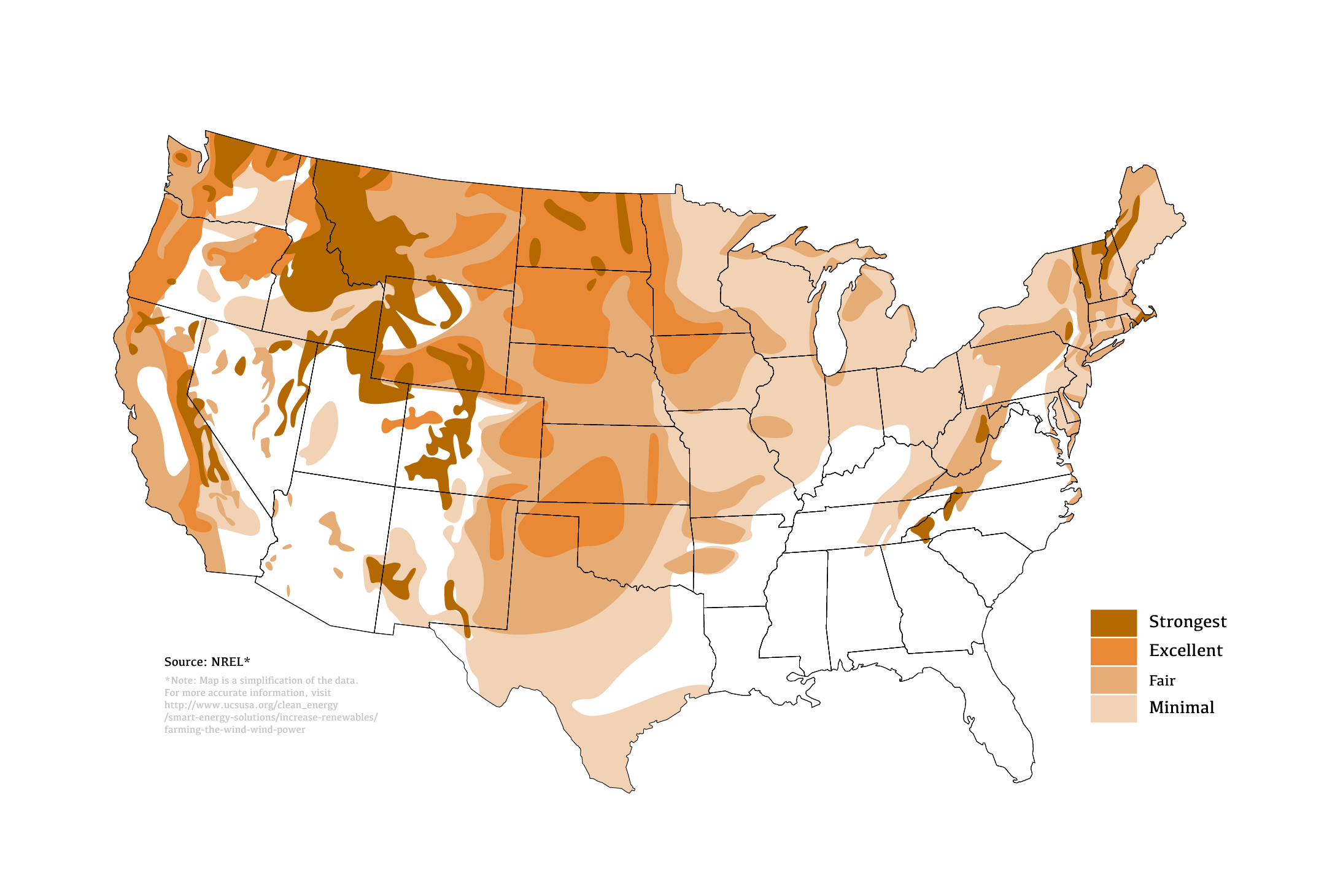
Conserving Energy with Conservation Tillage
Since the early 1970s, agriculture has reduced its energy consumption by more than 25 percent in the U.S. alone. How did this happen?

The practical benefits of wind power are not news to most farmers. For generations, they’ve used windmills to pump water, mill grain, and even generate small amounts of electricity for their farms.
But wind energy has grown up in the past two decades, and new wind turbines (often arrayed across the landscape in clusters called “wind farms”) may generate up to five percent of the U.S. energy needs by the year 2020 (according to goals set in The U.S. Department of Energy's "Wind Powering America").
As it turns out, a huge percentage of farmland in the United States happens to sit squarely in the middle of some of the windiest places in the country (see map 1: “Wind Resource Potential”). Many states have developed wind resource maps and have been measuring the wind and collecting data that farmers could find useful for determining the wind potential on their land.


Farmers can benefit directly from wind power by using the electricity generated by wind turbines to power their farms. They can also lease portions of their land to wind developers, who typically pay farmers $4,000 to $8,000 for each turbine (according to Windindustry.org). This extra income can stabilize farmers’ cash flow, and help protect them from big swings in commodity prices. The electricity generated by these leased-use turbines is sent back into electrical grid, providing clean and renewable energy for all of us.
Because the physical footprint of wind turbines is so small, farmers can basically harvest two crops on the same piece of land: grain or livestock below, and wind above. Large wind turbines typically use less than half an acre of land, including access roads, so farmers can continue to plant crops and graze livestock right up to the base of the turbines.
Related Articles

Since the early 1970s, agriculture has reduced its energy consumption by more than 25 percent in the U.S. alone. How did this happen?

